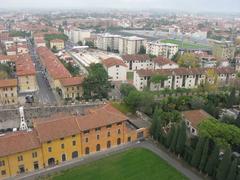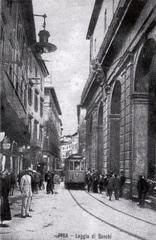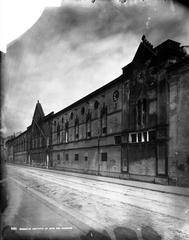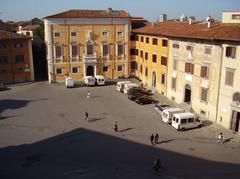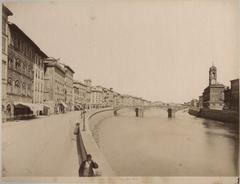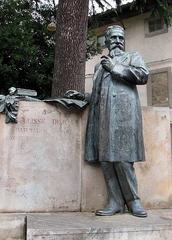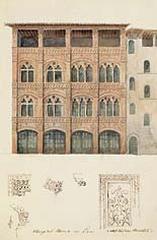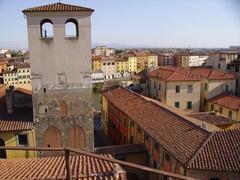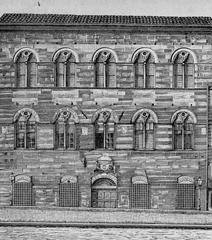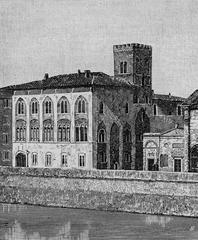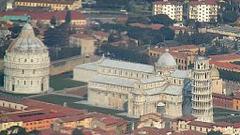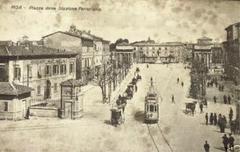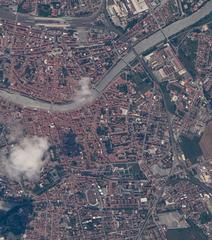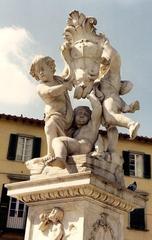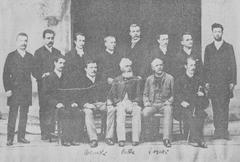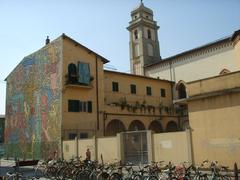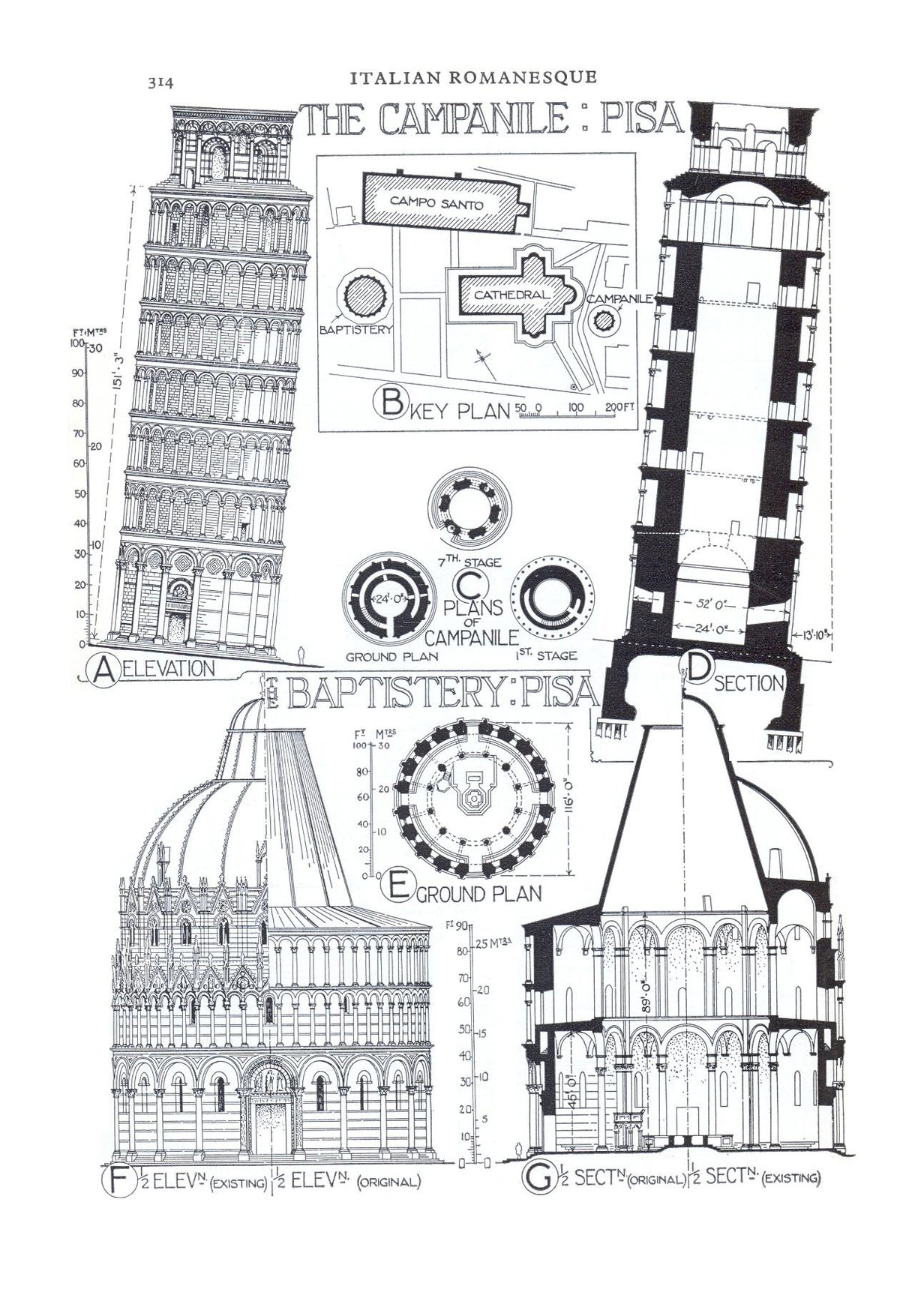
Visiting the Battistero di San Giovanni: Hours, Tickets, and Historical Insights
Date: 18/07/2024
Introduction
Today, the Pisa Baptistery is part of the Piazza dei Miracoli complex, which includes the Leaning Tower of Pisa, Pisa Cathedral, and Camposanto Monumentale. As a UNESCO World Heritage site, it attracts countless visitors each year, drawn by its historical, architectural, and religious significance. This guide provides an in-depth exploration of the Baptistery’s history, architectural features, visitor information, and travel tips to enhance your visit.
Table of Contents
- [Introduction](#introductionintroduction)
- [Historical Background](#historical-backgroundhistorical-background)
- [Nicola Pisano and the Dawn of a New Era](#nicola-pisano-and-the-dawn-of-a-new-eranicola-pisano-and-the-dawn-of-a-new-era)
- [Generations of Artists Leave Their Mark](#generations-of-artists-leave-their-markgenerations-of-artists-leave-their-mark)
- [Visitor Information](#visitor-informationvisitor-information)
- [Visiting Hours and Tickets](#visiting-hours-and-ticketsvisiting-hours-and-tickets)
- [Travel Tips](#travel-tipstravel-tips)
- [Special Events and Guided Tours](#special-events-and-guided-toursspecial-events-and-guided-tours)
- [Photographic Spots](#photographic-spotsphotographic-spots)
- [Conclusion](#conclusionconclusion)
- [FAQ](#faqfaq)
Historical Background
The Baptistery’s story begins in the 12th century, a time when Pisa stood as a formidable maritime republic. Flush with wealth from its Mediterranean conquests, the city embarked on an ambitious building program to showcase its power and piety. The year 1152 marked the start of the Baptistery’s construction, envisioned as a grand edifice dedicated to Saint John the Baptist, the patron saint of Pisa.
Diotisalvi, a little-known architect at the time, was entrusted with the project. He laid the foundation for what was initially conceived as a simple, circular structure. His design, evident in the lower level, reflects the prevailing Romanesque style, characterized by its rounded arches and sturdy, geometric forms.
Nicola Pisano and the Dawn of a New Era
However, the Baptistery’s fate, and indeed the trajectory of Italian art, took a dramatic turn with the arrival of Nicola Pisano in 1260. A sculptor of immense talent and vision, Pisano was tasked with continuing the Baptistery’s construction. He inherited Diotisalvi’s Romanesque base but infused the upper levels with a revolutionary new style—Gothic.
Pisano’s influence is most evident in the Baptistery’s intricate facade. Gone are the weighty forms of the Romanesque; in their place, we see the delicate pointed arches, ornate carvings, and soaring verticality characteristic of Gothic architecture. This stylistic shift, pioneered by Pisano, marked a pivotal moment in Italian art history, bridging the gap between the Romanesque and the nascent Renaissance.
Generations of Artists Leave Their Mark
The Baptistery’s construction spanned over two centuries, becoming a canvas for successive generations of artists. Following Nicola Pisano, his son, Giovanni Pisano, further enriched the building with his sculptures, showcasing a more expressive, emotive style that hinted at the coming Renaissance.
The Baptistery’s interior, too, bears witness to this artistic evolution. While the lower level reflects Diotisalvi’s austere Romanesque design, the upper galleries are adorned with intricate carvings and sculptures added over the years. The magnificent octagonal font, a masterpiece by Guido Bigarelli da Como, stands as a testament to the Baptistery’s religious significance.
Visitor Information
Visiting Hours and Tickets
The Pisa Baptistery is open to visitors year-round. However, visiting hours may vary depending on the season, so it’s advisable to check the official website for the most up-to-date information. Tickets can be purchased online or at the site, with options for combined tickets that include other Pisa historical sites such as the Leaning Tower and the Cathedral.
Travel Tips
- Best Time to Visit: Early morning or late afternoon to avoid the crowds.
- Nearby Attractions: The Leaning Tower of Pisa, Pisa Cathedral, and Camposanto Monumentale.
- Accessibility: The Baptistery is accessible to visitors with disabilities, but some areas may have limitations.
Special Events and Guided Tours
The Baptistery occasionally hosts special events and guided tours that offer deeper insights into its history and architecture. Check the official website for information on upcoming events and how to book a guided tour.
Photographic Spots
For photography enthusiasts, the Baptistery offers numerous picturesque angles. The facade, with its intricate carvings and Gothic elements, is particularly stunning at sunset.
Conclusion
Today, the Battistero di San Giovanni stands as a UNESCO World Heritage site, a testament to Pisa’s glorious past and its enduring artistic legacy. Its history, etched in every column and archway, offers a captivating glimpse into the evolution of art, architecture, and faith in Italy. A visit to the Baptistery is not just a journey through time; it’s an encounter with the very soul of Pisa.
FAQ
- What are the Pisa Baptistery visiting hours? The visiting hours vary by season; check the official website for current times.
- How much are Pisa Baptistery tickets? Ticket prices vary depending on the type of ticket and any combined entry options. Visit the official website for detailed pricing.
- Is the Pisa Baptistery accessible for visitors with disabilities? Yes, but some areas may have limitations.
- Are guided tours available? Yes, guided tours are available and can be booked through the official website.
Call to Action
Don’t miss the chance to explore the Pisa Baptistery and other historical sites in Pisa. Download our mobile app Audiala for more travel tips, check out our other related posts, and follow us on social media for the latest updates.

